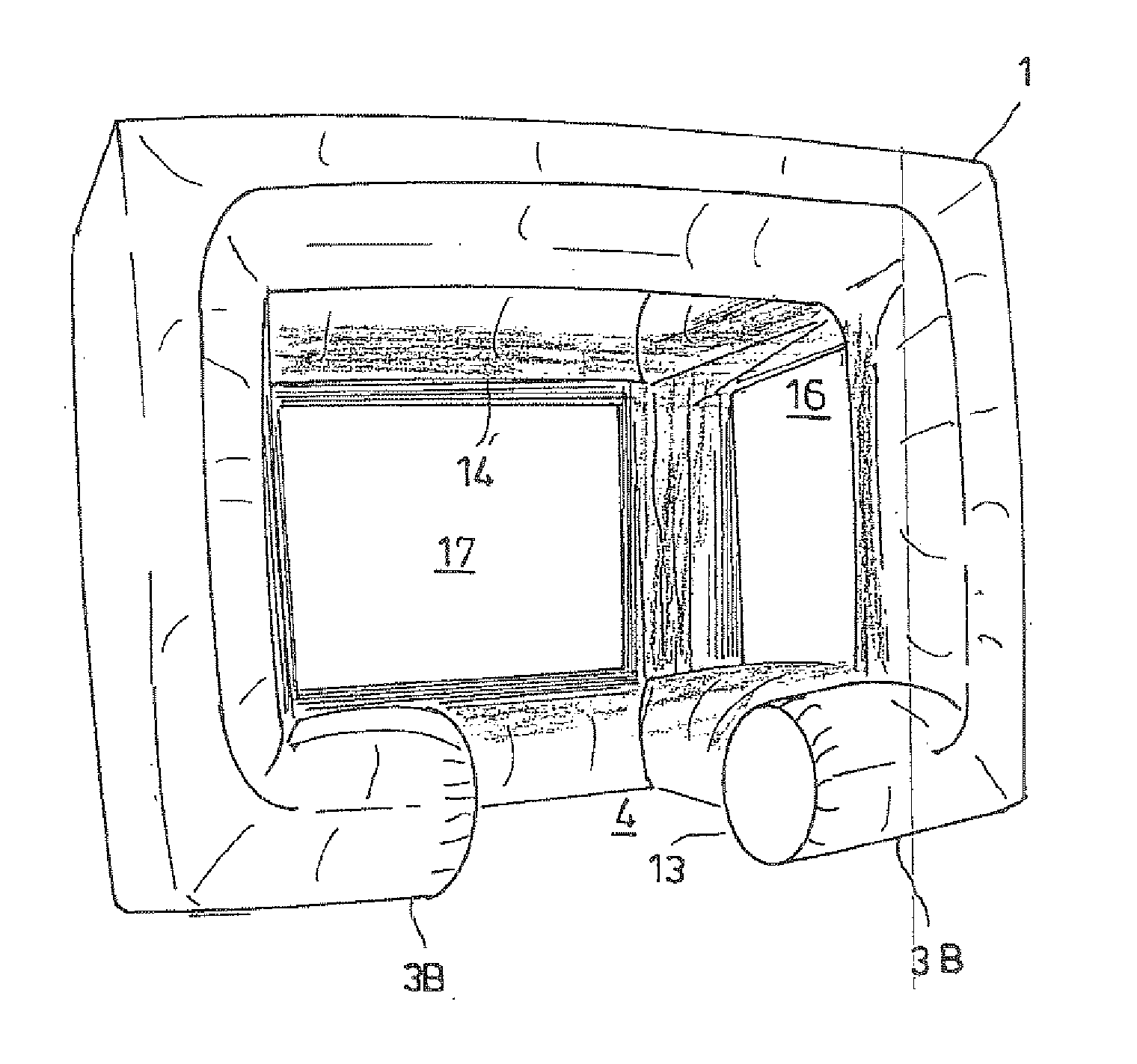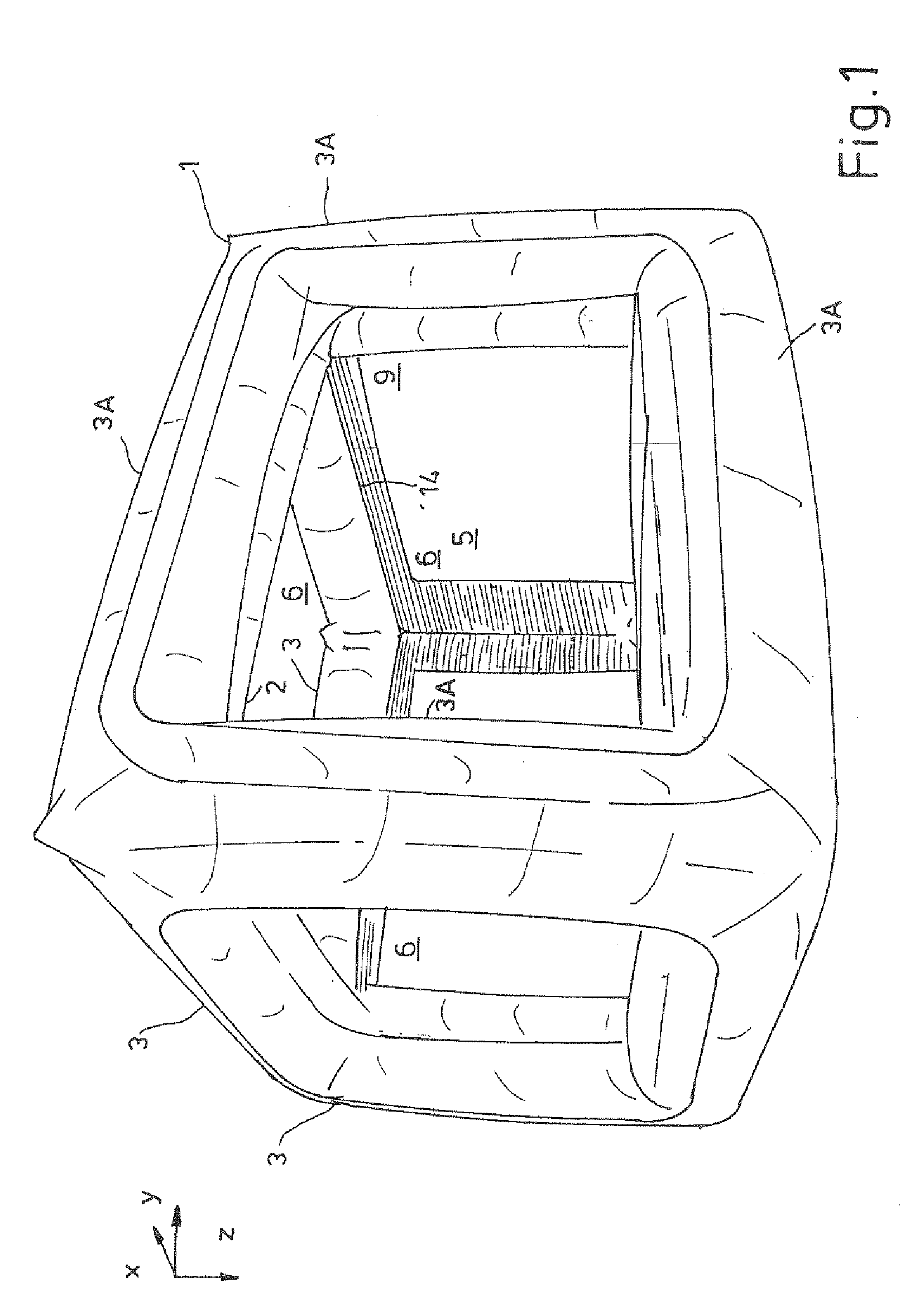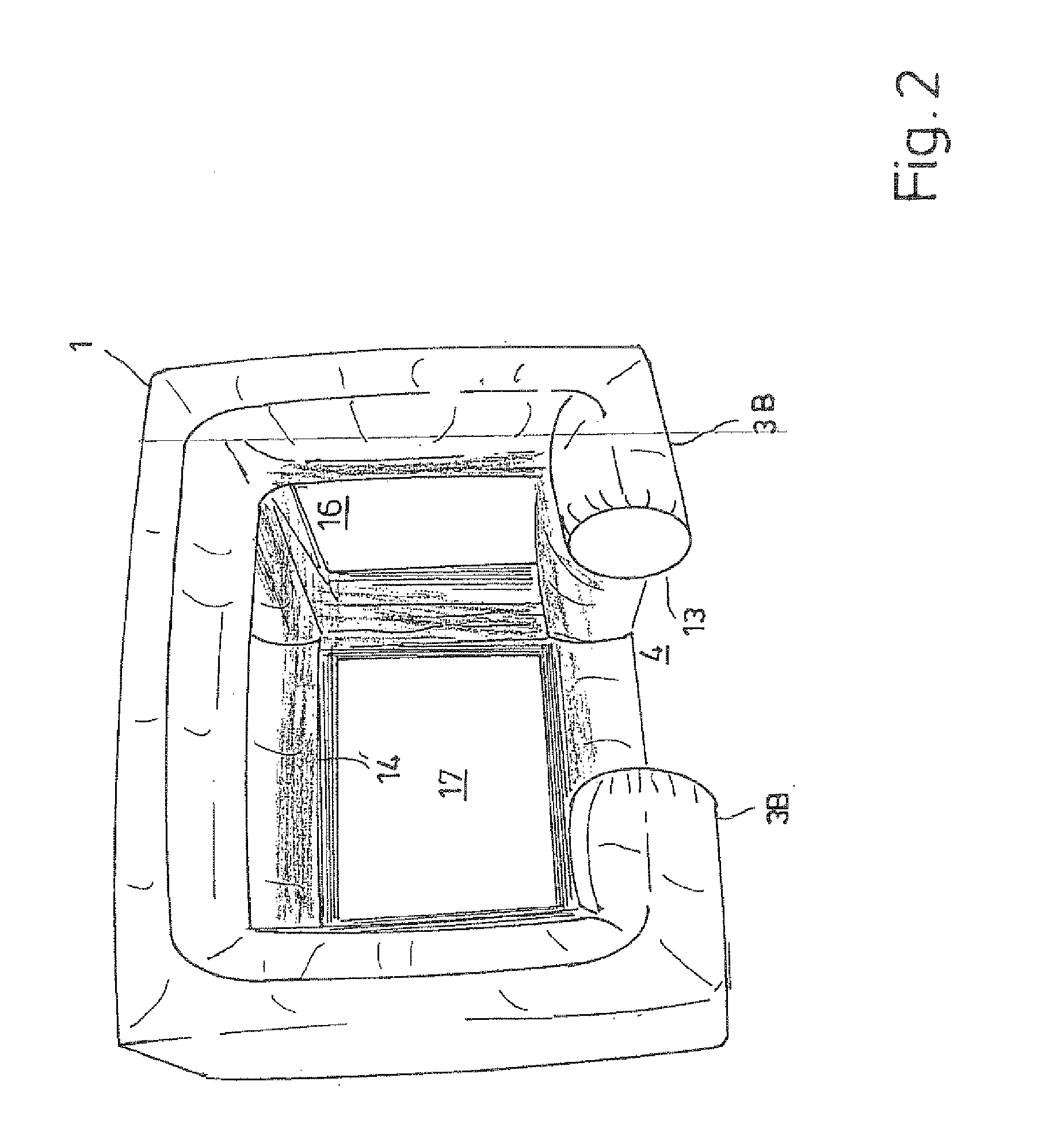[0011]The invention has recognized that, owing to the three-dimensional structure formed by the tubes, a hollow body is formed which, owing to its three-dimensional configuration, has intrinsic stability—as compared with the large-sized transportable projection screens which are mentioned at the beginning and are essentially realized only in two-dimensional form, the intrinsic stability as a rule not having to be ensured by additional ropes, frames or supporting structures. In other words, the invention has recognized that, with the large-sized transportable projection screen formed according to the above concept, a fillable, shape-variable hollow body is provided which can be filled within a very short period of time—for example within 10 to 30 min., and, in the process, develops intrinsic stability. The anchoring measures which are especially time-consuming and expensive are avoided with the large-sized transportable projection screen according to the above-described concept. Furthermore, operations at a height of customarily some meters are also avoided with the large-sized transportable screen according to the present concept. In general terms, it virtually involves a “turn-key
system”, in which the large-sized transportable projection screen is provided by the filling of the shape-variable hollow body without further measures.
[0012]Furthermore, the large-sized transportable projection screen according to the present concept has considerably improved picture quality over the customary large-sized projection screens which are of planar and two-dimensional design. This is achieved above all by the fact that, in addition to the possibility of projection in dark surroundings, the possibility of projection in
daylight conditions is also provided. The invention has recognized in this case that, in order to improve the
image quality, a
projector in the internal space of the structure can be arranged for rear-side projection onto the display surface, with the internal space expediently being bounded on all sides in order to form a space which is darkened against light incidence from the outside, preferably in order to form a
dark chamber. In other words, the intermediate spaces formed by the scaffolding or framework of the tubes are advantageously bounded on all sides by light-proof darkening surfaces. That is to say, the internal space is preferably bounded by further darkening surfaces which are arranged on further edges formed by a further part of the tubes. The internal space of the structure is thereby darkened, which permits considerably improved rear projections onto the display surface even during
daylight. In contrast thereto, the two-dimensional large-sized projection screens mentioned at the beginning are suitable only for projections in dark surroundings, since they do not have a darkened space for the arrangement of the
projector. One darkening surface is preferably formed by a display surface.
[0016]As already mentioned, it is advantageous, in particular for the provision of a large-sized transportable projection screen for daylight conditions, that the internal space is bounded on all sides in order to form a
dark chamber. The boundary may be formed by non-inflatable darkening surfaces which, depending on requirements, can likewise be used as display surfaces—either as a projection surface or as a simple printed display surface. Less advantageous, but nevertheless conceivable, is also the possibility of arranging between the tubes planar, fillable, in particular inflatable elements which are fastened releaseably or non-releaseably. This would have the
advantage, however, that the
dark chamber formed by the structure can be entirely provided by the fact that the tubes and the planar elements are filled, preferably inflated. Further removal or covering of the open surfaces of the structure is therefore unnecessary. Irrespective of the manner in which the dark chamber structure is realized, the fillable tubes of the structure constitute a three-dimensional scaffolding or framework which imparts inner stability and intrinsic stability to the large-sized projection screen.
[0024]As already mentioned above, it has proven advantageous within the scope of a particularly preferred development for the structure to be free from planar, fillable partial hollow bodies. In other words, the hollow body in the form of the structure is composed entirely of the tubes. This guarantees the intrinsic stability of the hollow body, and a dark chamber can be realized in a particularly simple manner by removal of the intermediate spaces.
[0025]Furthermore, it has proven particularly advantageous within the scope of a development for a light shield and / or one or more panels to be arranged at the edge. This applies in particular to the edge on which a display surface used as the projection surface is arranged. According to this development, not only is light incidence from the back of the projection screen therefore limited—by the realization of a dark chamber, but also light incidence onto the projection surface from the front side is limited by the light shield. The light shield advantageously forms a shadow space in front of the display surface, in particular the projection surface. The capability of the large-size projection screen to operate in daylight conditions is thereby further improved.
[0027]Different embodiments have proven advantageous with regard to the design of the display surface. In the case of a projection surface, the latter is advantageously formed in the form of a semi-transparent screen. Depending on the surrounding light conditions, said screen may be designed to be a light milky color or else brownish beige. In the case of a display surface in the form of printing surfaces, for example in the form of
mega-print screens, the display surface can be designed in a particularly advantageous manner as a tarpaulin. Such a tarpaulin may be holed or perforated. This has advantages in terms of weight.
 Login to View More
Login to View More  Login to View More
Login to View More 


